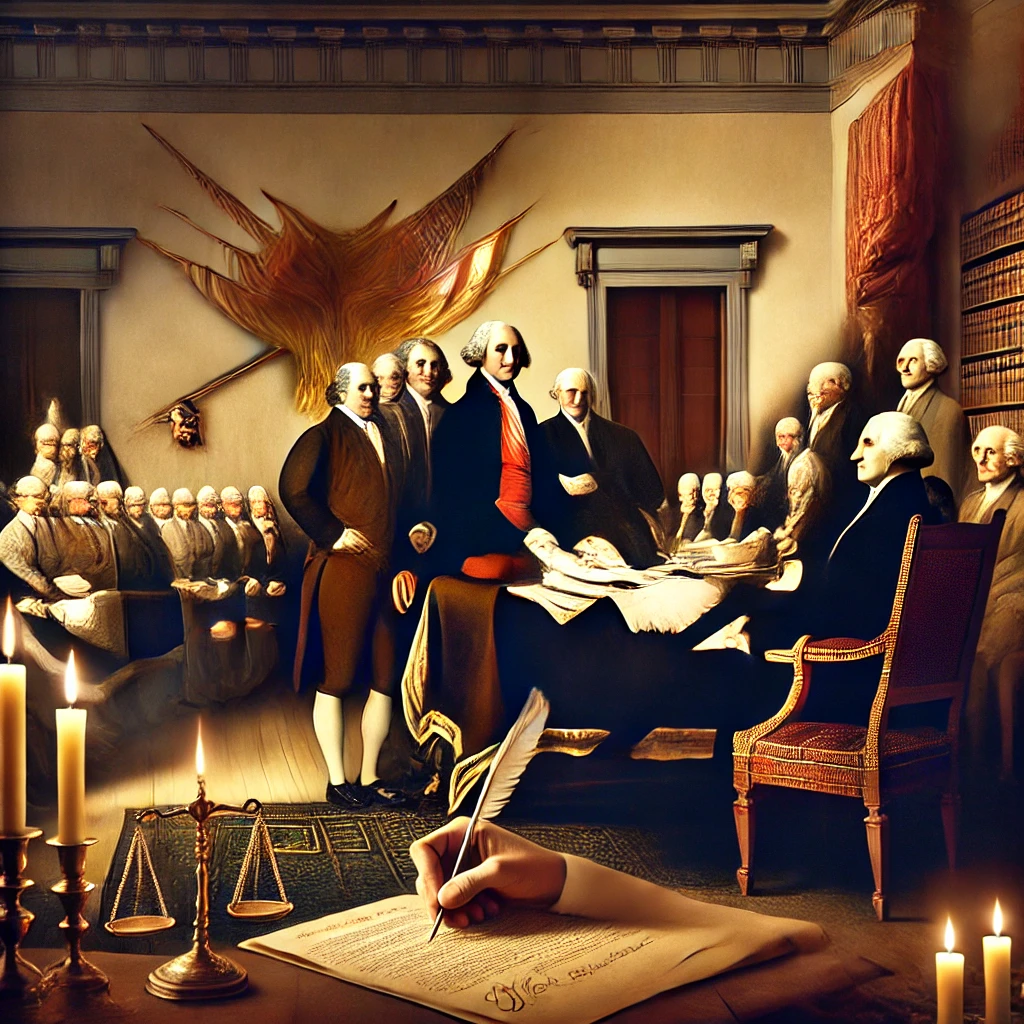A New Nation’s Judicial System Takes Shape
On September 24, 1789, the United States took a monumental step in building its judicial system with the establishment of the Supreme Court. Signed into law by President George Washington, the Judiciary Act of 1789 laid the foundation for the federal judiciary and created the Supreme Court as the highest court in the land. This marked a critical moment in the development of the U.S. Constitution, ensuring a system of checks and balances that would serve as a cornerstone of American democracy.

The creation of the Supreme Court was essential for interpreting laws and resolving disputes, balancing the powers of the executive and legislative branches, and safeguarding the rights and liberties promised in the newly formed Constitution. Its establishment signaled that the United States was committed to justice, law, and governance, principles that continue to guide the nation today.
The Judiciary Act of 1789: Building a Judicial Framework
The Judiciary Act of 1789 was a landmark piece of legislation that structured the federal court system. It not only established the Supreme Court but also created 13 district courts and three circuit courts, organizing the judiciary across the states. The act empowered the Supreme Court to hear appeals from lower federal courts and state courts, giving it jurisdiction over critical constitutional questions and disputes between states.

At its inception, the Supreme Court consisted of a Chief Justice and five associate justices, a relatively modest beginning compared to the powerful institution it would become. The act provided that the justices would serve life terms, ensuring that their decisions could be made without the pressures of political influence or short-term considerations. The Judiciary Act’s framework has endured, although the number of justices and the specifics of the court’s jurisdiction have evolved over time.
John Jay: The First Chief Justice
President George Washington appointed John Jay as the first Chief Justice of the United States, a role he took up with the responsibility of shaping the early direction of the court. Jay, a diplomat and Founding Father, played a crucial role in establishing the court’s authority and legitimacy in its early years. Under his leadership, the Supreme Court handled its first cases and began to define its role within the federal government. Though the early years of the Supreme Court were relatively quiet, with few significant cases, Jay’s tenure laid the groundwork for the court’s evolving authority. His efforts helped ensure that the Supreme Court would become a respected and independent body, a necessary counterpart to the legislative and executive branches. The precedent set by Jay’s leadership helped solidify the court’s place in American governance.

Shaping the Rule of Law in America
The establishment of the Supreme Court was not just a legal formality—it was a commitment to the rule of law and a reflection of the values enshrined in the Constitution. By creating a judicial branch with the power to interpret the law, the framers of the Constitution ensured that justice would be administered impartially and consistently across the country. The Supreme Court’s role as the final arbiter of constitutional questions has had profound implications for American democracy. Over the centuries, the Supreme Court has heard cases that have shaped the very fabric of American society. Landmark decisions such as Marbury v. Madison (1803), which established the principle of judicial review, and Brown v. Board of Education (1954), which ended racial segregation in schools, demonstrate the court’s ability to adapt to changing societal values while upholding the principles of the Constitution.
A Lasting Impact on American Democracy
The creation of the Supreme Court in 1789 has had a lasting impact on the development of American democracy. The court has played a crucial role in maintaining the balance of power between the branches of government, ensuring that no single branch becomes too powerful. Through its decisions, the Supreme Court has protected individual rights, expanded civil liberties, and interpreted the Constitution in ways that reflect the evolving nature of the nation.
Today, the Supreme Court remains one of the most powerful and influential institutions in the United States. Its decisions affect nearly every aspect of American life, from civil rights to economic policy, and its role as a check on the other branches of government continues to be essential to the health of the republic. As the nation continues to grow and change, the Supreme Court’s role in shaping the legal and political landscape remains as vital as ever. Its founding in 1789 marked the beginning of a long and complex journey toward justice, one that continues to shape the nation’s future.
